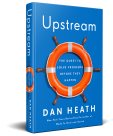Over at Slate, Juliet Lapidos asks, how much is $700 billion?
Let’s say Slate charged its advertisers $30 per 1,000 ad impressions, a common industry rate. And let’s imagine for a second that the federal government decided to nationalize Slate in order to pay for the bailout. We’d need our readers to rack up enough page views to see 23.3 trillion banner ads before the feds were satisfied.
For historical perspective, consider that the Marshall Plan, which helped finance the recovery of Western Europe after World War II, cost the United States about $13 billion. Of course, in 2008 dollars that’s more like $100 billion. And Niall Ferguson has estimated that as a comparable share of the U.S. GDP, it’s more like $740 billion.



